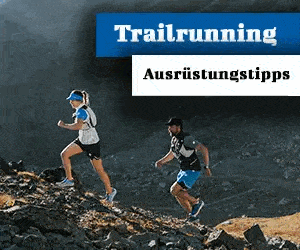In the summer of 2018 and 2019, top Austrian athlete Alex Luger opened the multi-pitch route Seventh Direction (8c, 220m) on the Drusenfluh east face. On August 6, he managed the first free ascent of the heavily overhanging line. We spoke to the man from Vorarlberg about his mega-project, in which he invested five years of his life and which has now found its crowning glory with the red point ascent.
Rewrote August 6, 2022 Alex Luger recently as the day of his climbing life. In just six hours he managed - quite unexpectedly - to redpoint his youngest and most difficult multi-pitch route so far: Seventh Direction (8c, 220m). The line runs through the extremely steep east face of the Drusenfluh. Each of the five difficult pitches overhangs eight meters. Unlike the lines that Alex Luger usually prefers, Seventh Direction is really athletic, demands a lot of endurance and offers difficult sections right to the end
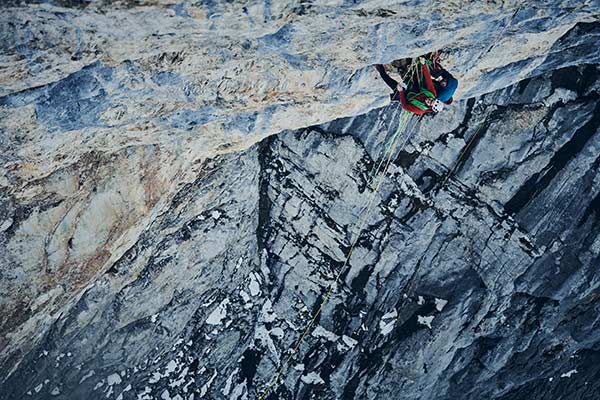
Alex, what was going through your mind when you reached the last belay?
It was a war of nerves. I have a long history with this route. Due to the high level of difficulty, it took me two years to free climb the first ascent and then another long time to climb the individual red point pitches.
«I have a long history with this route. Due to the high level of difficulty, it took me two years to do the first ascent in free climbing.»
Alex Luger
On Saturday I'll be there without much expectation Pio Jutz Went there in fog, actually just to train on the route. After I was able to climb the first two difficult pitches on the first try, I said to Pio at the belay in front of the key pitch: "If I get up that pitch, I'll have a panic attack and need a mental coach!"
And what did your mental coach advise you to do?
Pio said exactly what I needed at that moment! He said he wasn't a good mental coach, so I should pull myself together and just throw the tour away.
"I'm not a mental coach, pull yourself together and knock the tour away."
Pio Jutz
In the sport climbing garden, I sometimes take an hour's break between difficult project attempts. During this ascent, the cold temperatures didn't allow for any longer breaks that day, I had to stay in the flow.
What happened next?
It was pure crime. The key length demanded everything from me. It was a real fight to the last move. I have to admit I felt a bit nauseous while cliffing from this belay. I never thought I would get this far that day.
Nervously very tense, I now had to concentrate on the last two pitches. I had recently rehearsed the first of the two and was able to climb it with the first go. Now only the last difficult pitch lay ahead of me.
My nerves were extremely tense, but I didn't let anything break through. The special thing about this route is that on the last pitch, the last two moves are the most difficult.
"The special thing about this route is that on the last pitch, the last two moves are the most difficult."
Alex Luger
When I actually got to the top, I could hardly believe that I had climbed through in six hours on that day and in these conditions. I knew from the training sessions that I was very good at the route. And yet the red point ascent came as a great surprise because the density of difficult rope lengths is so high.
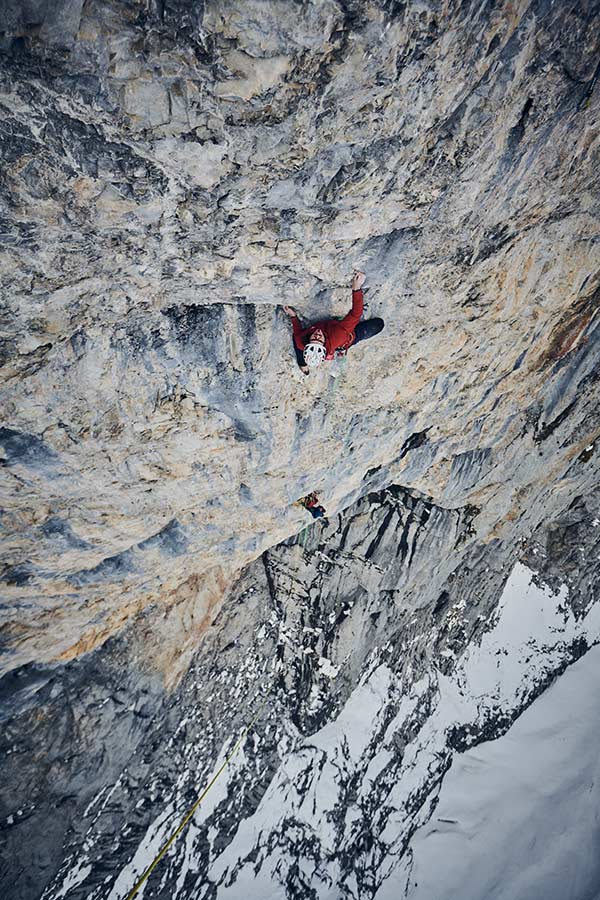
How do you manage to stay calm at the crucial moment?
I can rely on myself incredibly well. I have a strong confidence in myself when I'm in motion. I know that I function very well when things get tough or dangerous.
I can mobilize myself mentally very well by being in motion and only using my head when standing still. For example, when I'm at a rest point, I can relax physically, but then the thoughts start.
«I can rely on myself incredibly well. I have a very strong confidence in myself when I'm in the movement."
Alex Luger
But I won't delve deeper into these thoughts. In this moment there is no doubt, I am only in the moment. I might go through the motion sequence of the next sequence again in my mind. My breathing is very deep and loud, it's like a mantra for me. As soon as I decide to continue climbing, I am back only in the body, the head is switched off.
Seventh Direction is difficult to the very end, is this a new experience for you?
For me it was a new dimension up to that point. The reason for this is the overall package of the route with five lengths in the tenth and lower eleventh difficulty level.
"For me, Seventh Direction is a new dimension to date."
Alex Luger
There are three years between the first ascent and the red point ascent. Where did you have to develop further so that the first free ascent worked?
At the beginning I thought that a first ascent from below in this wall was impossible. The style is very important to me on a first ascent, because it makes a big difference whether you first explore a tour from above and drill in, or you dare to climb the wall from below in free climbing. I knew that if only one and a half square meters were smooth somewhere, then I couldn't get any further.
I exposed myself in the wall and just wanted to rely on my skills. It was important to me to do without technical aids for locomotion. It is what it is and I'm doing my best. So until the last day of the first ascent, up to the last meter of the tour, it was not clear whether I would make it through.
"I exposed myself in the wall and just wanted to rely on my skills."
Alex Luger
When I made the first ascent, a big chapter was closed for me because I knew that the route could be climbed freely. The red point ascent was a sporting dream of mine, comparable to a floor gymnast doing his freestyle. Everything has been rehearsed, it's now a matter of getting the performance in one day.
I'm brutally happy. It's good for me that I managed to redpoint the route in one day. But the first ascent has a completely different value for me.
"When I made the first ascent, a big chapter was closed for me because I knew that the route could be climbed freely."
Alex Luger
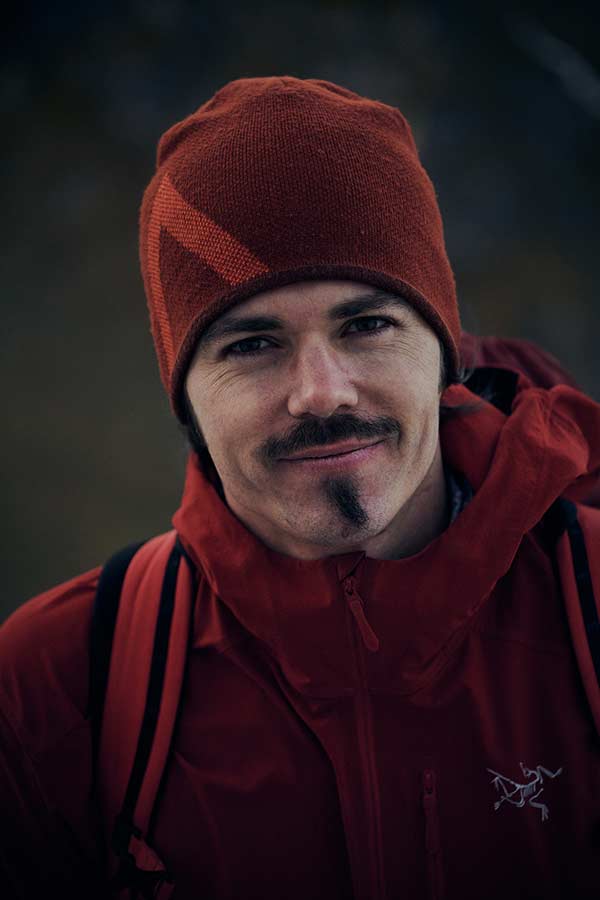
What's the deal with the name Seventh Direction?
I first read about "the seventh direction" in a book about Native Americans. Our Western culture speaks of four directions. Native American cultures recognize seven directions.
There are cardinal points of east, south, west, and north, which correspond to our life cycle of birth, adolescence, adulthood, and elderhood. Then there is the direction of heaven and earth. These six cardinal points are easy to find.
However, the seventh direction is more difficult to discern. It is the direction in all of us, the place that helps us to see right and wrong and to keep balance in choosing to live in a good way.
I really liked the seventh direction of orientation and found this name appropriate as a route name because it is a highly personal struggle to make such a route.
Who is behind such a big project?
On the first ascent, various good friends and my father secured and supported me on the route. I'm with you very often Florian Wild and Hanno Schluge hung in the wall. I would like to thank all of these people for their support.
What happens to you after such a mega project?
That has certainly changed. I try to take it to the fullest. I think that you have to be able to linger on something so that joy can arise, especially in our fast-paced world.
"I think that you have to be able to linger so that joy can arise, especially in our fast-paced world."
Alex Luger
I am a person who is easily inspired and drawn to a wall, an expedition or whatever. But I also want to make a conscious decision to take my time. Because I sacrificed a lot of time for this tour and it absorbed me a lot.
What does a tour like Seventh Direction give you?
For me, climbing is a school of life. Climbing is incredibly direct. A request comes from outside, from nature, and I have to respond to it together with my partner. It's very satisfying, because when you choose, you're in the action that directly affects your existence.
Even though I've experienced difficult and dramatic situations in my 25-year climbing career, it feels real and very alive.
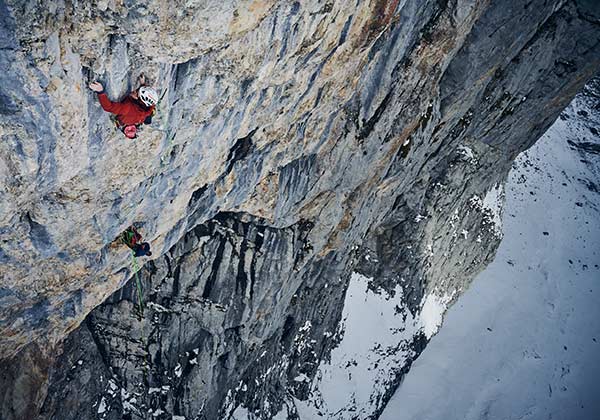
You have a clear idea of how to first climb routes. Where does this ethical claim come from?
We have a great tradition of free climbing in the Central Alps and especially in Eastern Switzerland. There were personalities like the Saxe Emmanuel Strubich and the Austrian Paul Preusswho have done difficult first ascents free solo, without technical aids. Martin Scheel and Beat Kammerlander have further developed this ethic in the Rätikon.
For me, a bolt, used with reason, is not the murder of the impossible. This requires that you approach it in a reductionist manner and use it for protection (if no mobile protection is possible) and not for locomotion. That was always the style of Scheel and Kammerlander.
"Used sensibly, a bolt is not the assassination of the impossible."
Alex Luger
You notice an enormous difference when a route was first climbed from below. The placement of the safeguards is correct and where there is a hook, there is also a handle to hang it up. Everything in between is mandatory, mandatory. These are absolutely logical lines.
How much potential do you see for new lines in the Rätikon?
I still see a lot of potential for difficult tours. For me, however, such difficult first ascents take a back seat. I would rather take a step towards giving up and climbing new lines with normal hooks and mobile belay devices and free climbing.
Facts about Seventh Direction (8c, 220m)
- Location: Drusenfluh East Face
- First ascent: Alex Luger, Flo Wild, Hanno Schluge and Christoph Luger in summer 2018 and 2019
- First free ascent: Alex Luger on August 6, 2022
- Difficulty: 1st SL: 6a, 2nd SL: 6a, 3rd SL: 8b, 4th SL: 8b+, 5th SL: 8c, 6th SL: 8a+, 7th SL: 8b
Topo Seventh Direction
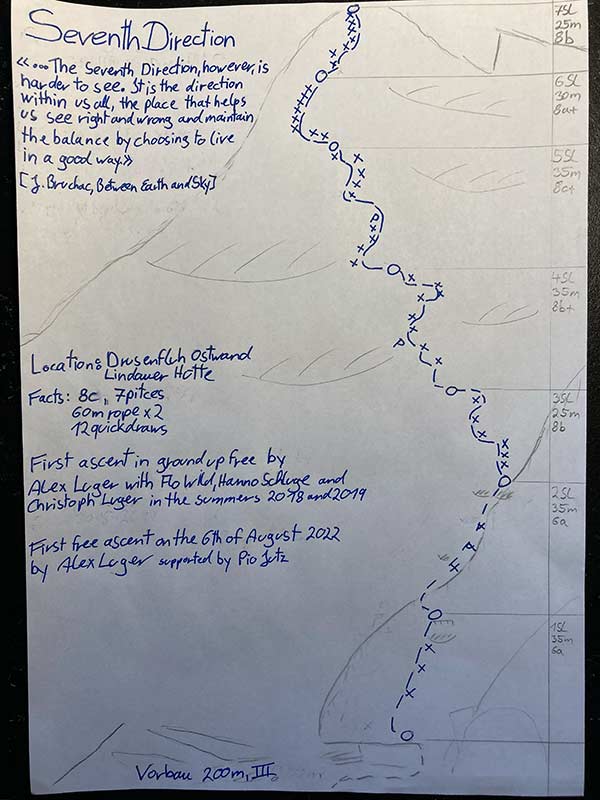
That might interest you
- Alex Luger climbs Speed at Voralpsee
- Nemuel Feurle in an interview about his ascent of Sangre de Toro (8b +): "That's exactly what I never wanted to experience."
- Cédric Lachat climbs Rätikon-Route Wogü (8c) rotpunkt
Do you like our climbing magazine? When we launched LACRUX, we decided not to introduce a payment barrier. It will stay that way, because we want to provide as many like-minded people with news from the climbing scene.
In order to be more independent of advertising revenue in the future and to provide you with even more and better content, we need your support.
Therefore: Help and support our magazine with a small contribution. Naturally you benefit multiple times. How? You will find out here.
+ + +
Credits: Cover picture Ray Demsky


